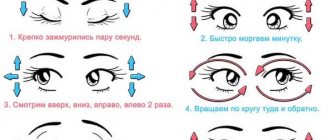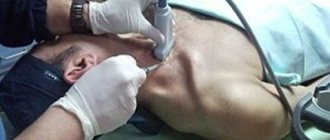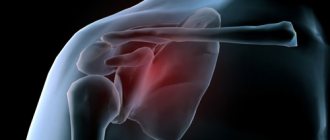Heart failure is a pathophysiological syndrome in which, as a result of a disease of the cardiovascular system, pumping function is reduced, which leads to an imbalance between the hemodynamic need of the body and the capabilities of the heart. Acute heart failure is a consequence of impaired myocardial contractility, a decrease in systolic and cardiac output. The pathology is manifested by extremely severe clinical syndromes: pulmonary edema, cardiogenic shock, acute cor pulmonale.
Chronic heart failure is manifested by a complex of characteristic symptoms (shortness of breath, fatigue and decreased physical activity, edema), which are associated with inadequate perfusion of organs and tissues at rest or during exercise and often with fluid retention in the body. For the treatment of patients suffering from heart failure, the Yusupov Hospital has created all the necessary conditions:
- Chambers with European level of comfort;
- Equipping with life-supporting equipment of expert class;
- Modern methods for identifying the causes of heart failure;
- Treatment with the latest drugs that are highly effective and have a minimal range of side effects.
Severe cases of heart failure with patients experiencing severe shortness of breath and rapid heartbeat are discussed at a meeting of the Expert Council. Doctors and candidates of medical sciences, doctors of the highest category collectively develop the optimal scheme for managing patients. The most severe patients with heart failure are treated in the intensive care unit. It is equipped with modern medical equipment, which allows emergency care to be provided in accordance with current European and domestic standards. If indicated, resuscitators use stationary or portable artificial lung ventilation devices. Relatives of patients may be present in the wards.
Causes of development of chronic heart failure
Chronic heart failure can develop in patients suffering from coronary heart disease, arterial hypertension, and heart defects. In coronary heart disease, a common cause of left ventricular systolic dysfunction and chronic heart failure is acute myocardial infarction and ischemic cardiomyopathy. The progression of chronic heart failure is caused by changes in the geometry and local contractility of the heart muscle.
In patients suffering from hypertension, regardless of the cause of arterial hypertension, a structural restructuring of the myocardium occurs, which is called a “hypertensive heart”. Chronic heart failure develops as a result of acquired and uncorrected rheumatic defects. Other causes of chronic heart failure include infective endocarditis, toxic cardiomyopathy due to exposure to drugs, alcohol, radiation therapy, systemic vasculitis, metabolic and endocrine disorders.
Types of shortness of breath
- expiratory,
- inspiratory,
- mixed.
Medicine knows 3 main types of shortness of breath:
- Inspiratory dyspnea causes difficulty breathing.
- Expiratory shortness of breath is, on the contrary, problems with exhalation.
- The mixed type is characterized by respiratory failure during inhalation and exhalation.
Based on the reasons for development, there are:
- cardiac;
- central;
- pulmonary;
- hematogenous dyspnea.
Types of shortness of breath are determined according to how deep and often the breath is taken:
- rapid (tachypnea);
- rare (bradypnea);
- rare and superficial (oligopnea);
- rapid and deep (hyperpnea and polypnea).
Symptoms of chronic heart failure
Shortness of breath is one of the earliest symptoms of heart failure. In the initial stages of the disease, shortness of breath occurs only during intense physical activity. As the disease progresses, the load threshold decreases. Patients with severe heart failure complain of shortness of breath at rest.
Orthopnea is shortness of breath that occurs when lying down, especially with a low headboard. She disappears into a vertical position. Shortness of breath in heart failure appears after a few minutes of the patient being in a horizontal position. It disappears just as quickly in a standing or sitting position. The cause of orthopnea is an increase in venous blood flow to the heart and overflow of blood into the pulmonary circulation.
Patients with heart failure are bothered by a rapid heartbeat. This is a compensatory mechanism that is aimed at maintaining minute blood volume in conditions of decreasing stroke volume. Patients complain of interruptions in the functioning of the heart, which may be a manifestation of rhythm disturbances observed in patients with heart failure.
Strong palpitations and shortness of breath on exertion are accompanied by a dry, unproductive cough. It appears in a horizontal position of the patient. Cough in heart failure occurs due to congestion in the lungs, swelling of the bronchial mucosa and irritation of cough receptors. Early signs of the development of heart failure are weakness, increased fatigue and heaviness in the lower extremities. These complaints appear due to impaired blood supply to skeletal muscles.
With systolic heart failure, patients experience swelling in the lower extremities. Initially, they are located in the ankles and feet, appear in the evening and disappear in the morning after rest. As heart failure progresses, swelling spreads to the lower legs and thighs. They become more persistent, intensify in the evening and do not disappear after rest.
In the early stages of heart failure, patients develop nocturia, an increase in urine output at night. It is associated with differences in blood flow in the renal arteries in patients with heart failure at rest and during exercise. a significant decrease in daily diuresis (oliguria) - indicates a significant decrease in renal blood flow and cardiac output even at rest. It is characteristic of late stages of heart failure.
Causes of palpitations and shortness of breath not related to heart disease
Most often, shortness of breath with an abnormal heartbeat is caused by heart disease, but in some cases the causes of unpleasant symptoms are less obvious.
Taking medications
Medicines used to treat asthma and thyroid disorders can cause heart palpitations and shortness of breath. These side effects occur especially often at night. It is necessary to make an appointment with your doctor to prescribe a different type of pill with fewer side effects. But in no case should you stop taking medications on your own, or select analogues on the Internet.
Hormonal imbalances
Pregnancy, menopause, and irregular periods can cause unexplained weakness, rapid heartbeat, and shortness of breath. Unpleasant symptoms disappear as soon as hormone levels normalize. In rare cases, hormonal therapy is prescribed.
Breathing exercises will help get rid of shortness of breath that occurs during a panic attack
Panic attacks
If shortness of breath and rapid heartbeat are accompanied by a feeling of anxiety against a background of constant stress, a panic attack may occur. This condition is not life-threatening and can occur periodically in every healthy person.
But if panic attacks occur regularly, then you should seek help from a psychotherapist. It is enough to take a course of cognitive behavioral therapy, during which the doctor, in the form of persuasion, will help you give up negative thoughts or replace them with positive beliefs. There are also special breathing techniques that will help quickly equalize your heart rate and prevent the development of shortness of breath. In severe cases, your doctor may prescribe antidepressants that regulate serotonin levels.
Leading an unhealthy lifestyle
Some doctors believe that chronic fatigue, constant use of tobacco, alcohol or drugs (even mild ones) can cause rapid heartbeat and shortness of breath. It is enough to give up bad habits and the unpleasant symptoms will go away without additional treatment.
It must be remembered that, despite the fact that neither shortness of breath nor rapid heartbeat themselves pose a direct threat to life, they can be quite an alarming signal. Isolated cases of shortness of breath do not indicate illness in the body, but a constant lack of air and abnormal heartbeat is a direct path to the family doctor’s office. Only a specialist will be able to correctly identify the cause of unpleasant symptoms, make the correct diagnosis and prescribe treatment to improve the patient’s health.
Examination of patients with chronic heart failure
When examining a patient with shortness of breath, the doctor sees rapid breathing. The patient with shortness of breath takes a vertical position. In order to reduce shortness of breath in severe heart failure, patients take a forced sitting position with their legs down. They have pale skin that is cold to the touch. Excessive sweating develops as a result of increased activity of the sympathetic nervous system, slower peripheral blood flow and decreased blood supply to the tissue. Due to an increase in the content of reduced hemoglobin due to an increase in the release of oxygen from venous blood in patients suffering from heart failure, the skin of the torso, limbs, tip of the nose, and earlobes acquires a bluish tint. A manifestation of increased venous pressure is swelling of the neck veins.
Patients with shortness of breath experience increased breathing. When percussing the lungs in the presence of congestion, pulmonologists determine dullness of the percussion sound. Against the background of harsh or weakened breathing, moist, fine, silent rales or crepitus are heard in the lower parts of the lungs. Hydrothorax may occur in patients with biventricular heart failure. The fluid is located in the lower parts of the pleural cavity on the right or on both sides.
When examining the cardiovascular system, physical data reflect signs of the underlying disease, which is the cause of the development of heart failure. The boundaries of relative cardiac dullness may not change, shift to the right, left, or in both directions. In patients with coronary heart disease, the development of decompensation is accompanied by a weakening of the first tone, an accent of the second tone on the pulmonary artery can be heard, and with the development of relative atrioventricular insufficiency - systolic murmur.
Yusupovskaya’s doctors use the following laboratory diagnostic methods for heart failure:
- Clinical blood and urine tests;
- Determination of serum electrolytes;
- Estimation of glomerular filtration rate;
- Blood glucose level;
- Liver tests.
Considering that drugs that are used for shortness of breath due to heart failure affect the level of potassium in the blood, this indicator must be determined. To confirm the diagnosis of heart failure, a study of the level of natriuretic peptides - brain natriuretic peptide and its N-terminal fragment - is carried out.
The electrocardiogram reveals nonspecific changes that are characteristic of the underlying disease, rhythm and conduction disturbances, or coronary circulatory failure. Transient myocardial ischemia, rhythm and conduction disturbances are detected using 24-hour Holter ECG monitoring.
X-ray examination of the chest organs reveals an increase in the size of the heart and congestion in the pulmonary circulation. Echocardiography is an extremely important and basic method for assessing central hemodynamics and blood movement within the cavities of the heart. Using ultrasound, doctors clarify the origin of chronic heart failure, determine the nature and severity of dysfunction of the left ventricle, and objectively assess the dynamics of the process and the effectiveness of the therapy.
When performing echocardiography in M-mode, functional diagnostic doctors measure the size of the heart cavities, evaluate the structure and functional viability of the heart valves, and clarify the homogeneity and contractility of the myocardium. In order to objectify the condition of patients suffering from chronic heart failure, a six-minute walk test is performed:
- Measure a distance of 20 meters;
- Install 2 chairs at the ends of the distance;
- The patient is asked to walk from chair to chair for 6 minutes at his usual pace;
- After 6 minutes, the distance traveled is determined.
When assessing symptoms, the presence of dizziness, anginal pain in the heart, shortness of breath, and fatigue are taken into account. Before starting the test and immediately after its completion, heart rate and respiratory movements, and blood pressure are recorded. To determine the cause of chronic heart failure, invasive diagnostic methods are used: coronary angiography in combination with ventriculography.
Breathing exercises
Your nurse can show you how to take slow, deep breaths to help relieve shortness of breath. You can do them with the diaphragm, the muscle that separates the chest cavity from the abdominal cavity (see Figure 1). This type of breathing is called diaphragmatic breathing.
Figure 1. Aperture
Try to relax while doing breathing exercises. Relieve muscle tension. This will allow the abdominal cavity (belly), chest, and lungs to expand.
Here are some breathing exercises that can help relieve shortness of breath.
Deep breathing 4-8-8
This exercise improves the movement of air in the lungs. This helps increase oxygen levels throughout the body.
- Inhale through your nose, counting to 4.
- Hold your breath and count to 8.
- Exhale through pursed lips (as if you were whistling) for a count of 8.
- Repeat 4 times.
Chest wall stretch
This exercise will help the chest muscles become more elastic.
- Inhale through your nose, counting to 4. As you inhale, extend your arms in front of you and raise them above your head.
- Exhale through pursed lips. As you exhale, open your palms and lower your arms down to your sides.
- Repeat 4 times.
Rapid breathing through the nose
This exercise can help strengthen your diaphragm.
- Shut your mouth.
- Inhale and exhale quickly through your nose for 15 to 30 seconds.
- Practice this exercise several times until you can do it for 60 seconds.
Walking and breathing
These tips will help you breathe easier when walking.
- When walking on a level surface, inhale and exhale through your nose without opening your mouth.
- On inclined surfaces (slopes), inhale through your nose and exhale through pursed lips.
- When climbing stairs, exhale at each step through pursed lips.
Recovery from an attack of shortness of breath (from coughing or exercise)
- Tuck your chin to your chest.
- Take 10 short and sharp exhalations through your mouth. If necessary, take short breaths between them.
- When your neck muscles relax a little, inhale through your nose.
- Exhale 3 times through pursed lips. Inhale between exhalations.
- Inhale through your nose, counting to 4.
- Exhale through your open mouth, counting to 8 and making the sound “ah”.
- Repeat 3 times.
to come back to the beginning
Shortness of breath in a child
Most often, shortness of breath in children has the same causes and develops in the same way as in adults. Specific cases occur in newborns whose mothers suffer from heart disease and diabetes. The child may develop pulmonary edema - the so-called respiratory distress syndrome . Also, shortness of breath becomes one of the obvious manifestations of heart disease . Certain respiratory diseases in children cause difficulty breathing: laryngitis, false croup .
Diseases of the lungs and bronchi
The cause of difficulty breathing and lack of air often lies in pulmonary and bronchial pathologies. Moreover, almost all lung diseases manifest themselves through shortness of breath (expiratory, inspiratory, and mixed):
- acute and chronic bronchitis;
- chronic obstructive pulmonary diseases;
- pneumonia;
- bronchial asthma;
- tumors;
- tuberculosis;
- emphysema;
- polio.
Usually shortness of breath develops in parallel with cough, weakness, hemoptysis and other symptoms of pathologies of the respiratory system.
Treatment of cardiac dyspnea (lack of air) at the CBCP clinic
If there is a suspicion of cardiac pathology causing symptoms of shortness of breath, contact the International Center for Pathology of the Circulatory Organs. We offer high-quality diagnostics using expert-class equipment. You will be able to obtain objective and detailed information about the condition of your body.
At CBCP, you have at your disposal experienced high-level cardiologists and cardiac surgeons (including pediatric ones), certified specialists in functional and ultrasound diagnostics. You will be offered non-surgical treatment of cardiovascular diseases using modern methods used in Europe, Israel and the USA.










